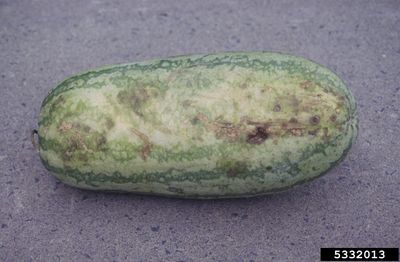Watermelon Anthracnose Info
Anthracnose is a disease caused by the fungus Colletotrichum. Symptoms of watermelon anthracnose can vary and affect any or all aboveground parts of the plant. This can include small yellow spots on leaves that spread and darken to black. If the weather is damp, fungal spores will be visible as pink or orange clusters in the middle of these spots. If the weather is dry, the spores will be gray. If the spots spread too far, the leaves will die. These spots can also appear as stem lesions. Additionally, the spots can spread to the fruit, where they appear as sunken, wet patches that turn from pink to black with time. Small infected fruit may die.
How to Control Watermelon Anthracnose
Anthracnose of watermelons thrives and spreads most easily in moist, warm conditions. The fungal spores can be carried in seeds. It can also overwinter in infected cucurbit material. Because of this, diseased watermelon vines should be removed and destroyed and not allowed to remain in the garden. A large part of treating watermelon anthracnose involves prevention. Plant certified disease free seed, and rotate watermelon plantings with non-cucurbits every three years. It’s also a good idea to apply preventative fungicide to existent vines. Fungicides should be sprayed every 7 to 10 days as soon as the plants begin to spread. If the weather is dry, the spraying can be reduced to once every 14 days. It’s possible for the disease to infect harvested fruit through wounds, so make sure to handle watermelons carefully when picking and storing them to prevent damage.
